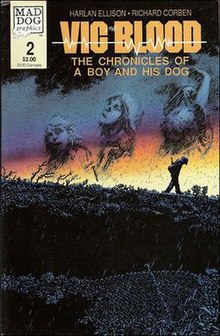
Clive Barker is an English novelist who came to prominence in the mid-1980s with a series of short stories, the Books of Blood, which established him as a leading horror writer. He has since written many novels and other works. His fiction has been adapted into films, notably the Hellraiser series, the first installment of which he also wrote and directed, and the Candyman series. He was also an executive producer of the film Gods and Monsters, which won an Academy Award for Best Adapted Screenplay.

Harlan Jay Ellison was an American writer, known for his prolific and influential work in New Wave speculative fiction and for his outspoken, combative personality. His published works include more than 1,700 short stories, novellas, screenplays, comic book scripts, teleplays, essays, and a wide range of criticism covering literature, film, television, and print media. Some of his best-known works include the 1967 Star Trek episode "The City on the Edge of Forever", considered by some to be the single greatest episode of the Star Trek franchise, his A Boy and His Dog cycle, and his short stories "I Have No Mouth, and I Must Scream" and "'Repent, Harlequin!' Said the Ticktockman". He was also editor and anthologist for Dangerous Visions (1967) and Again, Dangerous Visions (1972). Ellison won numerous awards, including multiple Hugos, Nebulas, and Edgars.

William Joseph Martin, formerly Poppy Z. Brite, is an American author. He initially achieved fame in the gothic horror genre of literature in the early 1990s by publishing a string of successful novels and short story collections. He is best known for his novels Lost Souls (1992), Drawing Blood (1993), and Exquisite Corpse (1996). His later work moved into the genre of dark comedy, with many stories set in the New Orleans restaurant world. Martin's novels are typically standalone books but may feature recurring characters from previous novels and short stories. Much of his work features openly bisexual and gay characters.
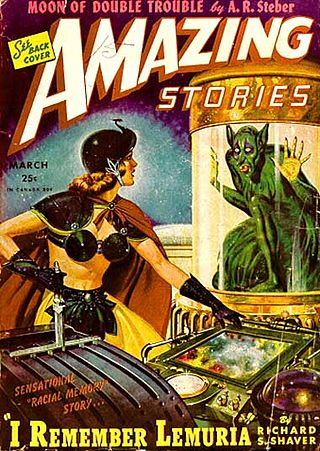
Richard Sharpe Shaver was an American writer and artist who achieved notoriety in the years following World War II as the author of controversial stories that were printed in science fiction magazines. In Shaver's story, he claimed that he had had personal experience of a sinister ancient civilization that harbored fantastic technology in caverns under the earth. The controversy stemmed from the claim by Shaver, and his editor and publisher Ray Palmer, that Shaver's writings, while presented in the guise of fiction, were fundamentally true. Shaver's stories were promoted by Ray Palmer as "The Shaver Mystery".
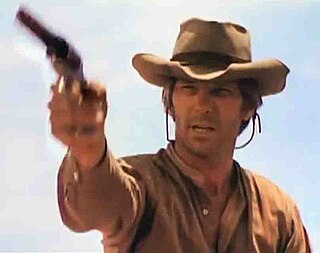
Justus Ellis McQueen Jr., known professionally as L.Q. Jones, was an American actor. He appeared in Sam Peckinpah's films Ride the High Country (1962), Major Dundee (1965), The Wild Bunch (1969), The Ballad of Cable Hogue (1970), and Pat Garrett and Billy the Kid (1973). His later film roles include Casino (1995), The Patriot, The Mask of Zorro (1998), and A Prairie Home Companion (2006).

Albert Payson Terhune was an American writer, dog breeder, and journalist. He was popular for his novels relating the adventures of his beloved collies and as a breeder of collies at his Sunnybank Kennels, the lines of which still exist in today's Rough Collies.

Raw Deal is a 1948 American film noir crime film directed by Anthony Mann and starring Dennis O'Keefe, Claire Trevor and Marsha Hunt. It was shot by cinematographer John Alton with sets designed by the art director Edward L. Ilou. An independent production by Edward Small, it was distributed by Eagle-Lion Films.
"Jeffty Is Five" is a fantasy short story by American author Harlan Ellison. It was first published in The Magazine of Fantasy & Science Fiction in 1977, then was included in DAW's The 1978 Annual World's Best SF in 1978 and Ellison's short story collection Shatterday two years later. According to Ellison, it was partially inspired by a fragment of conversation that he misheard at a party at the home of actor Walter Koenig: "How is Jeff?" "Jeff is fine. He's always fine," which he perceived as "Jeff is five, he's always five." Ellison based the character of Jeffty on Joshua Andrew Koenig, Walter's son. He declared:
... I had been awed and delighted by Josh Koenig, and I instantly thought of just such a child who was arrested in time at the age of five. Jeffty, in no small measure, is Josh: the sweetness of Josh, the intelligence of Josh, the questioning nature of Josh.
Mark V. Ziesing is an American small press publisher and bookseller, founded by Mark Ziesing. Active as a bookseller, from 1972 to present; Ziesing was in publishing, from the mid-1980s into 1998. The Ziesing publishing imprint specialized in science fiction, horror, and other forms of speculative fiction. Originally based in Willimantic, Connecticut and in partnership with his brother Michael, he published two books by Gene Wolfe under the name Ziesing Brothers.
"Demon with a Glass Hand" is an episode of the American television series The Outer Limits, the second to be based on a script by Harlan Ellison, which Ellison wrote specifically with actor Robert Culp in mind for the lead role. It originally aired on October 17, 1964, and was the fifth episode of the second season. In 2009, TV Guide ranked "Demon with a Glass Hand" #73 on its list of the 100 Greatest Episodes.
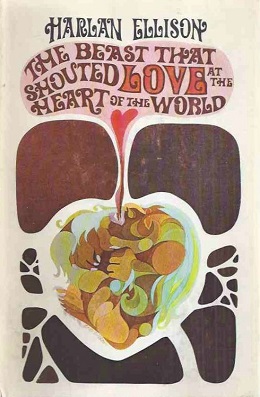
The Beast that Shouted Love at the Heart of the World is a short story collection by American writer Harlan Ellison, published in 1969. It contains one of the author's most famous stories, "A Boy and His Dog", adapted into a film of the same name. "The Beast That Shouted Love at the Heart of the World" won the 1969 Hugo Award for Best Short Story, while "A Boy and His Dog" was first published in New Worlds nominated for a Hugo Award for Best Novella and won the 1970 Nebula Award for Best Novella.
A Boy and His Dog is a 1946 American Technicolor short drama film directed by LeRoy Prinz. It won an Oscar at the 19th Academy Awards in 1947 for Best Short Subject (Two-Reel).
Susanne Benton is a retired Canadian actress known for her film roles as General Dreedle's WAC in Catch-22 (1970) and Quilla June Holmes in A Boy and His Dog (1975). In 1972, she appeared in the Andy Griffith film The Strangers in 7A, credited under her birth name, Susanne Hildur. She also used that name when appearing in an episode of Barnaby Jones a year later in 1973.

In Time is a 2011 American science fiction action film written, co-produced, and directed by Andrew Niccol. Justin Timberlake and Amanda Seyfried star as inhabitants of a society that uses time from one's lifespan as its primary currency, with each individual possessing a clock on their arm that counts down how long they have to live. Cillian Murphy, Vincent Kartheiser, Olivia Wilde, Matt Bomer, Johnny Galecki, and Alex Pettyfer also star. The film was released on October 28, 2011, and grossed $174 million against a $40 million budget. It received negative reviews on Rotten Tomatoes, which praised the premise but called the execution heavy-handed.

A Boy and His Dog is a 1975 American black comedy science fiction film directed by actor L. Q. Jones, from a screenplay by Jones based on the 1969 novella of the same title by fantasy author Harlan Ellison. The film stars Don Johnson, Susanne Benton, Alvy Moore, and Jason Robards. It was independently produced and distributed by Jones' company LQ/Jaf Productions. The film's storyline concerns a teenage boy, Vic, and his telepathic dog, Blood, who work together as a team in order to survive in the dangerous post-apocalyptic wasteland of the Southwestern United States. Shout! Factory released the film on DVD and Blu-ray in August 2013.
Harold "Hal" Ellson was an American author of pulp fiction whose work primarily focused on juvenile delinquency, a field in which he has been described as "one of the most popular" writers and as "legendary".

Mefisto in Onyx is a science fiction novella by American writer Harlan Ellison. The introduction and cover art were contributed by Frank Miller. Originally published in OMNI Magazine October 1993, then released as a hardcover in December 1993, Mefisto in Onyx was later included in Harlan Ellison's 1997 collection Slippage.
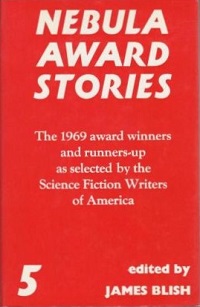
Nebula Award Stories 5 is an anthology of award-winning science fiction short works edited by James Blish. It was first published in the United Kingdom in hardcover by Gollancz in November 1970. The first American edition was published by Doubleday in December of the same year. Paperback editions followed from Pocket Books in the U.S. in January 1972, and Panther in the U.K. in December 1972. The American editions bore the variant title Nebula Award Stories Five. The book has also been published in German.

Nebula Awards Showcase 2007 is an anthology of award winning science fiction short works edited by Mike Resnick. It was first published in trade paperback by Roc/New American Library in March 2007.
This is a list of works by Harlan Ellison (1934–2018). It includes his literary output, screenplays and teleplays, voiceover work, and other fields of endeavor.
